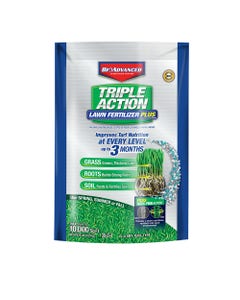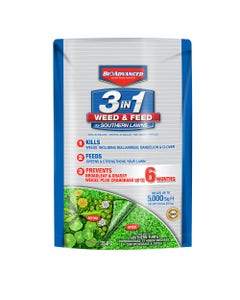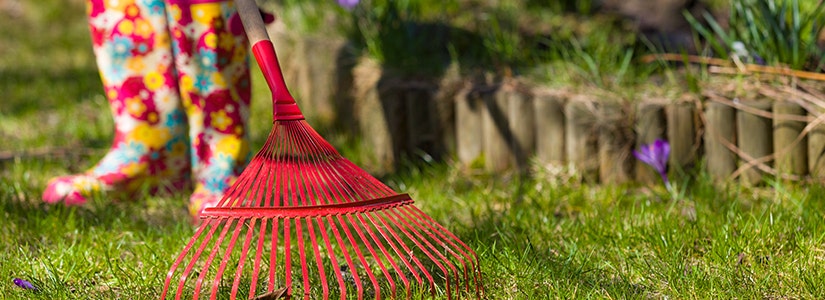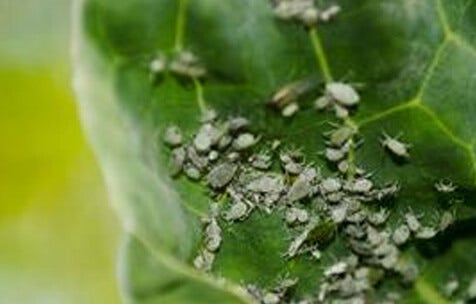

- Home
- Solution Center
- Learn
- Lawn and Landscape
- How To Spread Fertilizer: The Basics
How To Spread Fertilizer: The Basics
Lawns need regular fertilizing to maintain a vigorous bright green appearance, remain healthy and resist insects, weeds and diseases. But not just any fertilizer applied at any old time will do. Lawn fertilizer need to contain the right balance of nutrients applied in the right quantities at the right time of year. Done improperly, fertilizing can burn the lawn and/or make worse some of the pest problems you were trying to solve.
Weed & Feed products not only fertilize, but also add the benefit of weed control. Application timing and rates, and the types of lawns they can be used on, are usually quite different than when just applying fertilizer. Be sure to always read and follow label instructions.
When To Fertilize
It depends on the type of grass you have and where you live. Fertilizing should always coincide with the natural growth cycles of the type of grass you grow.
Cool-Season Grasses
For cool-season grasses, such as Kentucky Bluegrass, Fescues, Bentgrass and Ryegrasses, the most important time to fertilize is in fall and spring, just before their vigorous growth periods. In cold winter areas, don't fertilize until the grass begins "greening-up" in spring. That means it's beginning to grow. Avoid fertilizing cool-season grasses in the heat of summer. Summer feeding can weaken the turf and promote disease. Your local Cooperative Extension System office can give you exact timing for your area.
Warm-Season Grasses
For warm-season grasses, such as Bermudagrass, St. Augustinegrass, Centipedegrass, Zoysiagrass, Bahiagrass and Carpetgrass, the most important time to feed is from spring through summer. In some southernmost areas with longer growing seasons, fall is also acceptable. Wait to fertilize warm-season lawns in spring until after the second mowing. This will ensure it's actively growing. In fall, make sure to fertilize at least six weeks prior to the average date of the first frost. Fertilizing too early or too late can weaken the turf and lessen hardiness. Your local Cooperative Extension System office can give you exact timing for your area.
How Often To Fertilize
This depends on a number of factors, including the type of grass, the length of your growing season, the type of fertilizer used and the quality of lawn you want. General recommendations often say to fertilize every 6-8 weeks, but fertilizers with slow-release forms of nitrogen, such as methylene urea, can last up to 3 months. Fertilizing frequency can also depend on the quality of lawn you want and where you live. The highest-quality, best-looking lawns require more frequent feeding, but often they also need more frequent mowing. So maintenance enters into the equation.
Some cool-season lawn people fertilize once in the fall. Others prefer to fertilize twice a year, feeding again in spring. Warm-season lawns look their best with 2-3 feedings during the growing season, but may need more applications in far southern regions with longer growing seasons.
Start with the fertilizer label to determine how often to fertilize, and then judge the results. Just remember, fertilizing too often increases maintenance and, possibly, disease problems. And not fertilizing often enough will cause the lawn to thin out, and increase weeds and other pests.
How Much Fertilizer To Apply
For most people, dry, granular lawn fertilizers are easiest to apply evenly. Liquid or water-soluble fertilizers may be useful for small lawns, but they are harder to apply evenly and may need frequent refilling.
Check the label to determine how much fertilizer to apply along with proper spreader settings. For dry fertilizers, the rates are based on pounds to apply per 1000 square feet. So before you buy, determine the square footage of your lawn. The front of the fertilizer package will call out amounts like 5,000 or 10,000 square feet. Decide what's best for your lawn size. Remember, extra fertilizer can be put back in the bag and saved for a future application.
How To Apply Lawn Fertilizer
The best way to apply dry fertilizer evenly is with a properly operating fertilizer spreader. How much fertilizer you apply depends on the type and model of spreader you use. Avoid fertilizing by hand, as it is almost impossible to apply evenly.
Fertilizer spreaders come in two basic types: Drop spreaders and broadcast spreaders.
Drop Spreaders – apply fertilizer very precisely in a narrow band directly below the spreader.
Broadcast Spreaders – use a rotary or whirling mechanism to spread fertilizer over a wider area. Because less fertilizer is applied the farther you get from the spreader, they are less precise than drop spreaders and making sure you use the right application pattern is very important. (Check manufacturer’s instructions). Broadcast spreaders come in wheeled and hand-held models. Wheeled types are more precise and better for large lawns.
Both types of spreaders have adjustable application settings. Read the spreader manufacturer’s instructions before fertilizing to help you calibrate your equipment to ensure proper application rates. You'll find the proper setting for your type of spreader on the specific fertilizer label. If not, there should be a toll-free phone number to call. Do not use the spreader until you are sure it is set properly.
Feeding New Lawns
Most new lawns don't need to be fertilized until 6-8 weeks after planting. However, that can vary depending on how the soil was prepared before planting and the type of fertilizer used. Consult your local Cooperative Extension System office or nursery for recommendations on fertilizing new lawns.













